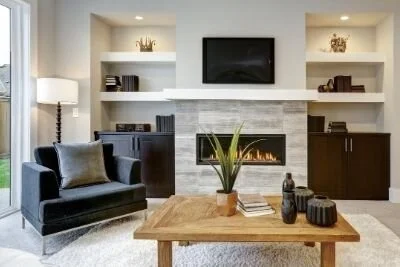How to Maintain a Home Fireplace
Fireplaces are beautiful interior amenities that convey elegance and sophistication. Nothing sounds cozier than warming up next to roaring fire in the middle of winter while reading a good book or playing a board game. Yet not many homeowners understand what it takes to keep their fireplace clean and dirt-free. Fortunately, this guide on how to maintain a home fireplace will help. Read below to find out how you can ensure safety and value with yours.
Clean the Interior
Assuming it’s a wood-burning fireplace, the interior will become dirty with soot, ash, and wood chips. Sweep these out regularly. Doing so keeps the fireplace’s interior clean and aesthetically pleasing. Additionally, having too much debris can backlog the heat (pun intended) so your fireplace won’t perform as effectively. Instead of throwing this debris away, use the ash in potting soil or the garden for excellent fertilizer.
Remove Soot Buildup
When wet wood burns, it leaves behind soot and creosote. That’s why you must ensure all wood is dry and properly stored before burning it. Nevertheless, dark residue can collect on the interior and exterior of your fireplace and/or chimney. Hot residue could potentially collect on flammable materials and start a house fire as well. While DIY guides exist, call a professional fireplace service to remove creosote and other residues every year.
Install a Fireplace Mantel
There are many benefits of a fireplace mantel, from both a practical and decorative viewpoint. With their intricate designs and artwork, mantels provide a finishing touch to the beauty of a fireplace. You can showcase collectibles and art on your mantel. More important, mantels shield the fireplace. Stone and brick mantels protect your interior from the fire’s smoke and flames, and the heat will not damage them. An elegant mantel can also increase market value for homeowners wanting to sell.
Keep Working Carbon Monoxide and Smoke Alarms Installed
The final tip for how to maintain a home fireplace may be most important, as it involves your safety. Always have working carbon monoxide and smoke alarms installed. Fireplaces can pose safety and health risks. Properly installed fireplaces should have no issues, but a clogged chimney or ventilation system could lead to carbon monoxide poisoning. Likewise, when the chimney or vent systems clog, smoke can fill the house, causing respiratory issues.


